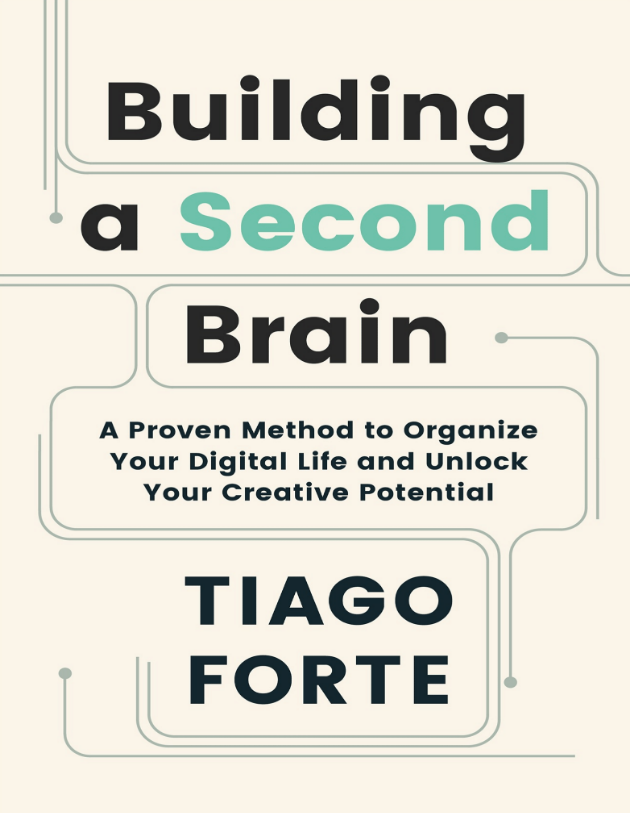In my previous post I’ve writen about knowledge work and how its output cannot be measured in a linear manner. For knowledge workers information is their most valuable capital, yet everyone is desperately looking for a system to manage the continous influx of information pouring into their brains.
We spend a tremendous amount of time managing huge amounts of information and searching for the right piece of knowledge. At the same time we are supposed to work at high standards (fast and continously) and keep up with emerging technologies.
To remain valuable in our economy, therefore, you must master the art of quickly learning complicated things. This task requires deepwork. If you don’t cultivate this ability, you’re likely to fall behind as technology advances. – Deep Work
Commonplace books #
Dealing with different kinds of input (books, articles, mails, messages etc.) can be exhausting and has a direct influence on your attention span. Individualized and internalized workflows how to deal with content/information definitely leads to better attention control, better productivity, release of cognitive resources.

Figure 1: “Building a Second Brain” by Tiago Forte
Before we had information overload, the commonplace book a diary or a journal of personal reflections. While it became popular in the Industrial Revolution (18th/19th century) it was mainly used by the educated class to understand “a rapidly changing world and their place in society”.
Your brain is for having ideas, not for holding them – Getting Things Done - The Art of Stress-Free Productivity
Nowadays the digital version of the commonplace book is the Second Brain. Other popular terms: Zettelkasten (slip box in German), memex, braindump or digital garden. It’s a combination of a study notebook, personal journal, sketchbook, collection of bookmarks etc. You can use it in different contexts (such as work, personal) and its main purpose is to organize knowledge while allowing you to
- make ideas concrete
- reveal new associations between ideas
- incubate ideas over time
- sharpen unique perspectives
- most important: take action
P.A.R.A. method #
Tiago has developed his own system how to organize information. Information is organized based on how actionable it is and not on its type or kind. That’s why it’s so universal and applicable for almost every profession or field.
P.A.R.A. is more like a production system. You won’t be able to always find the right place where a note belongs to. The category you initially put a note to, might change depending on your current projects and however your thoughts change in life. Every piece of information can be put into one of following categories:
- Projects
- current tasks you’re actually working on (short-term efforts)
- Areas
- Reponsibilities you want to manage over time (long-term efforts)
- Resources
- Topics/Interests that might be useful in the future
- What topics are you interested in?
- Architecture; Interior design; English literature; Beer brewing.
- What subjects are you researching?
- Habit formation; Notetaking; Project management; Nutrition.
- What useful information do you want to be able to reference?
- Vacation itineraries; Life goals; Stock photos; Product testimonials.
- Hobbies
- Passions
- Archives
- Inactive items from the categories above
Zettelkasten vs P.A.R.A. #
I used to call my knowledge database Or PKMS (Personal Knowledge Management System) a Zettelkasten Niklas Luhmann used one to write his many books. I can definitely recommend “How to take notes” (Söhnke Ahrens) (german: Das Zettelkasten-Prinzip) for further reading. (engl. slip box). I think the Zettelkasten approach appeals more with creative writing since it allows you to interconnect ideas easily due to the flat hierarchy between notes. Zettelkasten is a note-taking method designed to spark new ideas, whereas P.A.R.A. is a way of organizing files and content for a specific project.
Since the Zettelkasten expects you to have links between your zettels, you should be able to “browse” your thoughts/notes easily while looking for new ideas. This way the Zettelkasten makes it easy to create new content (articles, essays, books) and put together thoughts/concepts since you have already done the hard work of summarizing content and creating new links. P.A.R.A. instead is more for the lazy ones: It doesn’t force you to summarize Read more about Progressive Summarization your notes until you really need them. While you might collect notes for a specific project you’re working on, you could reuse these in a different one (as an intermediate packet).
Conclusion #
Around 2019 I came across the P.A.R.A. method as I was searching for a system how to organize highlights from different books. Later on I’ve read about Zettelkasten and implemented it using TiddlyWiki. This year I was quite excited when I first saw “Building a Second Brain” on goodreads.
Overall I think it’s an awesome resource for everyone starting in the PKMS world. P.A.R.A. is easy to apply, universal and applicable for every domain. After reading the book, I as well started to rethink my Tiddlywiki setup (which lead me to org-roam) and focus more on projects: I collect notes, ideas for a specific project and before I do the kick-off I make sure I have everything I need to start and also finish the project.
You can also have a look at my literature notes at brainfck.org